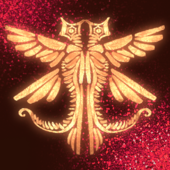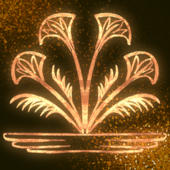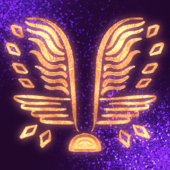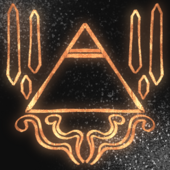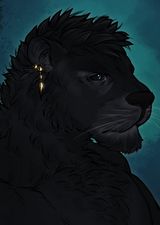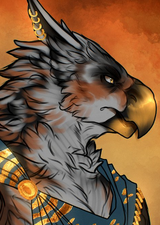More actions
| Asha | |
|---|---|
 | |
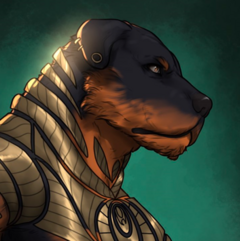 | |
| Nation State | The Ashal States |
| Ruler | N/A |
| Other Present | N/A |
| Languages | Ibeth, Common |
| Religion | Baskarr |
| First Recorded | 20,000 BC |
| Demonym(s) | Ashal |
The Asha are the oldest continuously existing People on Aloria, even pre-dating the Elven Allorn Empire, though has undergone massive changes throughout history. Under the early Dewamenet Empire, the Asha were poised to conquer vast parts of the world, however they came into conflict with the just-founded Allorn Empire. A cataclysmic war of Dewamenet Technology versus Allorn Magic erupted, which the Dewamenet lost. The surviving Dewamenet were enslaved by the Allorn Empire and used for tens of thousands of years as magically bound servants, while their Empire collapsed and their cities turned to dust. Despite Elven attempts to eradicate their culture, parts of it survived through being passed down within bound memories, and some Elves who were sympathetic to their fate. When the Allorn Empire collapsed under its own weight following the last Void Invasion, many Asha violently rose up and overthrew their Elven masters, establishing states of their own, and reconnecting with things from the past. In the modern day, the Asha are still very much affected by their millennia of servitude, with many of them having taken to the seas to attack Elven ships, try to free still enslaved Asha brethren or turn to Regalia to discover parts of their past lost to time. The Asha are a people that are slowly rediscovering their past in the world, and for many, to discover how the past has defined them and how they will define the future of all Asha.
Design
The Asha are a collective of anthropomorphic animal-people, the closest approximation of a "Furries" on MassiveCraft. A wide range of animal types are available, from canine to equine to feline, to marsupials and more, with some species classified under separate Lineages (see below). The Asha can have plantigrade legs and feet or digitigrade legs and clawed feet and hands. They can have a wide variety of natural eye colors, as well as natural fur or feather colors and patterns, but there is a great deal of freedom to change, for example using leopard fur patterning for a canine-otter hybrid design. Some unnatural colors are also available to some of the Legacies. It is important to also mention the Half-Asha, who the Asha consider full members of their societies. Half-Asha are Asha born from dominant Asha parentage that show Asha traits. Common appearances are for example animal-like eyes, ears, claws, tails, and legs, but mostly without fur covering their skin.
Cutures
Asha are divided over four so-called Lands which loosely determine their cultural associations and beliefs. This is an important choice for most Asha (though many are born in them) because it defines their outlook on life, and most notably how they interact with Elves and Mages. Historically Elves and Mages have inflicted a lot of pain and suffering on the Asha, and so the Cultures define how they act around Elves, and how they treat Mages. It is possible to change Cultures over the span of Roleplay, but choosing one is recommended when beginning a new Character so that others understand how they feel about certain topics, without the Character having to explain complex and potentially nuanced points of view for every Asha they meet.
Heritage Traits
When designing a Character, Proficiency Points allow for a limited Ability selection with Point Buy Packs. Heritage Traits adds free Packs and Mechanics on top of that to help with cultural themes. Free Packs grant Abilities usually, while Mechanics change the way a character functions in Roleplay through subtle, and usually out of Combat ways. In essence, Mechanics just add aesthetic flair that invest in the niche of each culture. Free Packs never raise Proficiency Points, but the character must be able to purchase them normally. (ex. if a character is a certain Affinity that locks them out of a category, they cannot take that specific free pack and must choose the alternative option.) If a Free Pack grants Magic of some type, that Magic can be of any Alignment the character can normally choose, or limited to a select alignment, which will always be written in the Free Pack description. Mixed Heritage characters (i.e. characters born from two parents of different Cultures) may take one parent's 'Free Packs' and mix and match up to 5 Mechanics from both parents, although some Peoples cannot produce Mixed Heritage children (due to Magical/Fantasy reasons). Half-Asha must still choose a Lineage to be matched with, and can only pick and choose Mechanics from that Lineage.
Free Packs
- Asha can choose 1 Pack from any Category for free. If any magic is chosen, the player may choose an Alignment between God Magic, Exist, Ordial, Void, and Dragon Magic.
- Asha can choose 1 non-Ability Pack that is not Magical or Religious in nature. Non-Ability Pack means that it must be a Pack that does not give a Combat Ability.
Lineages
There is a great deal of physical divergence among the Asha, though four major Lineages are considered categorically similar. While all Asha receive the same Free Packs, what Mechanics they receive is dependent on the Lineage they belong to. This choice cannot be changed, and is also relevant to determine the physical characteristics of the Character. It is possible to be a mix of Lineages, but only one Lineage must be chosen for Mechanics. Lineages have no bearing on Cultures, a Remet Asha can belong to Kemet or Deshret culture, and so on. Some caution should be exercised with Silontaar Lineage however, as while they could in theory claim to be Deshret Asha, because they are biologically Magical, other Deshret Asha may reject them.
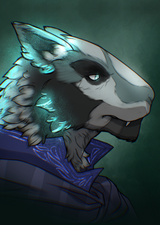 |
Silontaar Asha |
|
Mechanics
|
Language and Naming
The Asha speak a language called Ibeth which is based on real-life ancient Egyptian. However, it should be noted that because Ibeth is considered a reconstructed language from archeological evidence, that it is an incomplete language, and takes a lot of loan words from Common (English). Also, because it is a reconstructed language, not all Asha naturally speak Ibeth, as it is only really taught in the Ashal States and the Corsair Fleets. Most Asha who are born in Regalia never learn Ibeth, and more commonly speak the other languages of the Empire. In terms of naming, Asha similarly either have modern Ailor names or Elven given names if they were born in slavery, but many Asha have also started embracing Ibeth naming practices. Based on ancient Egyptian, these names can be complicated, because most online resources just re-iterate the names of priests and pharaoh's without discussing the names of the common people. Here follows some examples of how to construct Ibeth names with the information we have within the lore.
Baskarr based naming
Baskarr based naming refers to a common habit for a person to be called "Son of X" or "Made of Y". These are honorifics given at birth and end up being used as first names, but can also be adopted at a later point in life to honor a specific God of the Baskarr Pantheon. The current known Gods are Tjafar, Akhet, Khannar, Divi, Ra'mut, Wadjat, Nehet, and Hemnetjeret. Common name prefixes are: Sahu (spiritual body of), Sa or Si (son of), Sat (daughter of), Mose or Mes (born of), or Menkau (established in the soul of). Then, either the first or last syllable of the Gods is used to compose names, for example for Tjafar, these would be "Tja" or "Far", while Ra-Mut's syllables would be "Ra" or "Mut". Names can either be single words, or have a hyphen (-) to separate the syllables. Thus, finally composing a few name examples:
- Sahutja would be "the Spiritual body of Tjafar"
- Sat-Kha would be "daughter of Khannar"
- Menkau-Ra would be "established in the soul of Ra-mut"
- Narmose would be "born of Khannar", except the syllables are switched around.
- Rasa would be "son of Ra-mut", except the syllables are switched around.
If you need help composing a good name, please make a Ticket. It is perfectly acceptable to source names from the internet, please just try to avoid naming your Character Imhotep or Rameses or Tutankhamun, or such like familiar names from historical people. Generally speaking you should prioritize names that are easy to pronounce and not too overcomplicated long, while feeling unique to your character. Surnames are not common in Ibeth, though a frequent way to identify someone is by using the "of placename" suffix. This can either be existing cities in the Regalian Empire (or even Regalia), but is more commonly cities in the Ashal States, of which here follows a short list: Akhiza, Siwakhet, Nasar, Lunet, Lahun, Per-Wadjet, Tjebu, Zwajet, Akhet-aten, Bubaskarr and so forth.
Brief History
The Lost Era
The Dark Era
The Light Era
Conflicts and Alliances
Religions
Culture
Recommended Playstyle
Mannerisms
Expanded Lineages
Gallery of Art
Trivia
| ||||||||||||||||||||||||||
| Accreditation | |||||||||
|---|---|---|---|---|---|---|---|---|---|
|
| ||||||||
